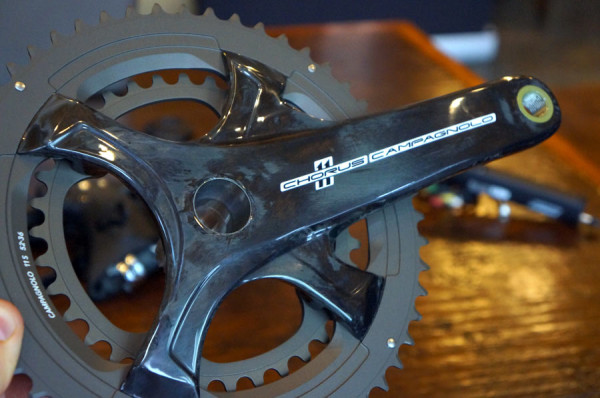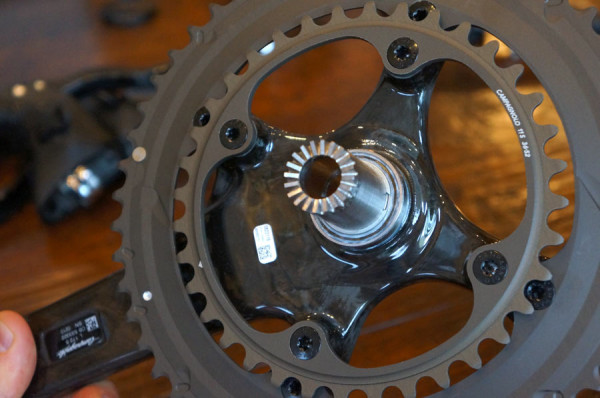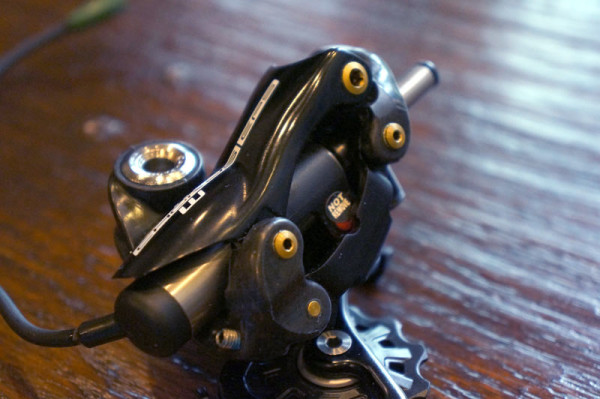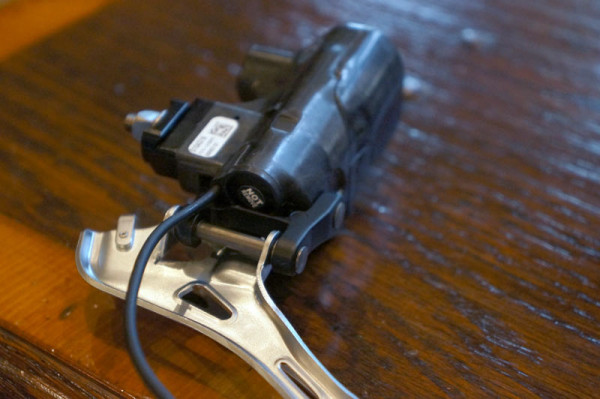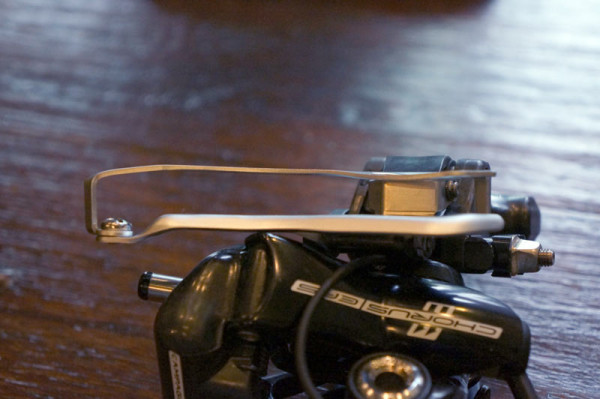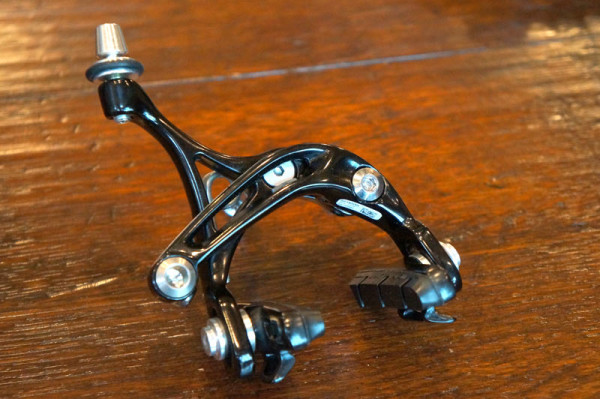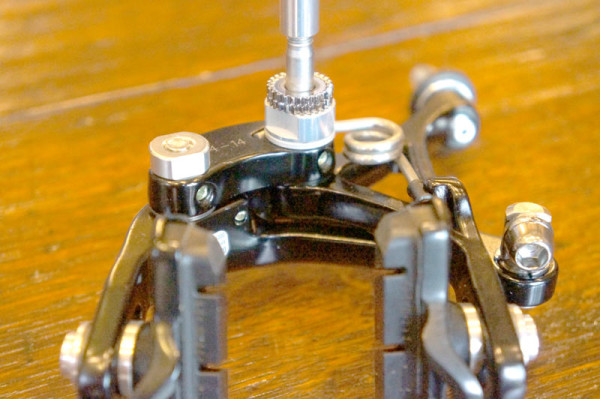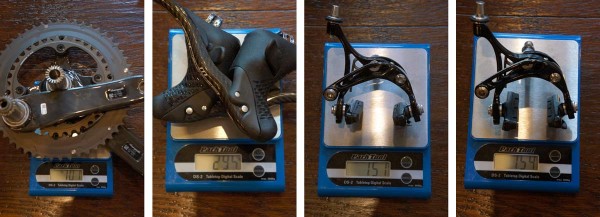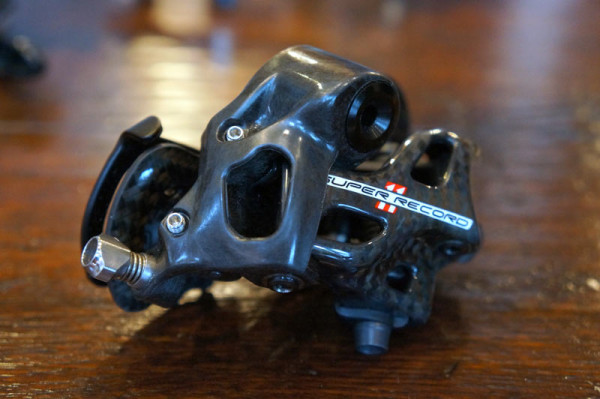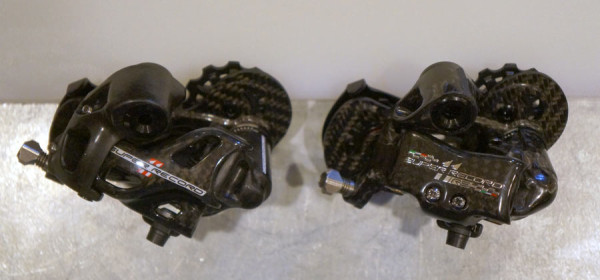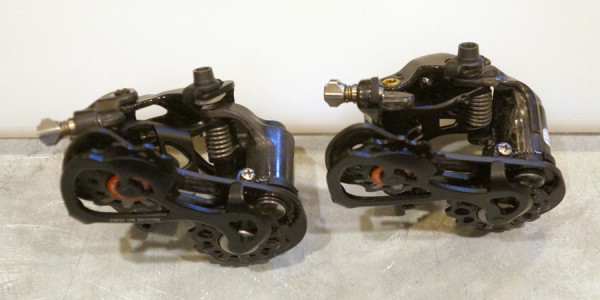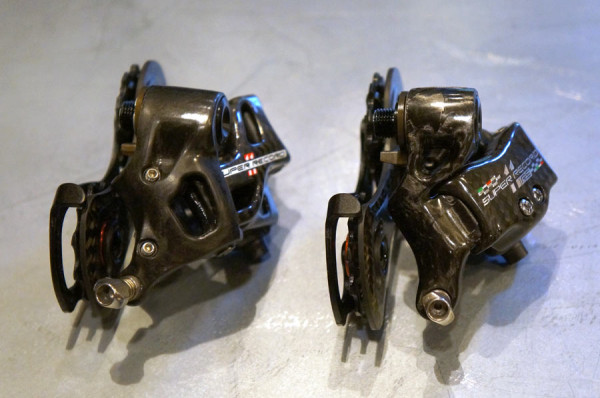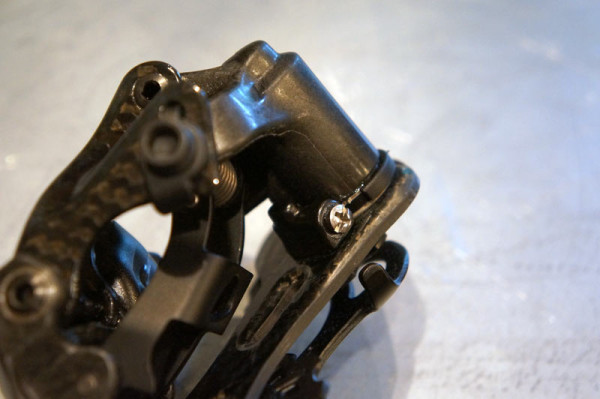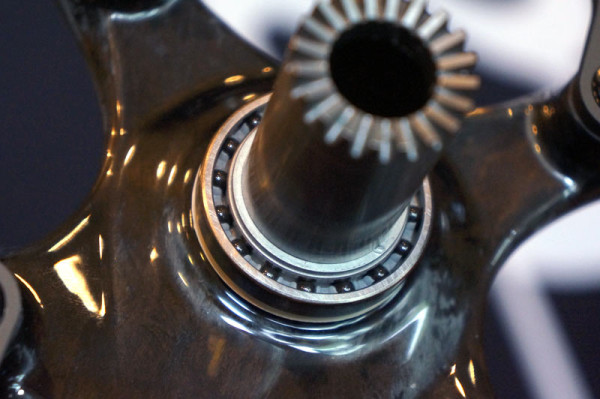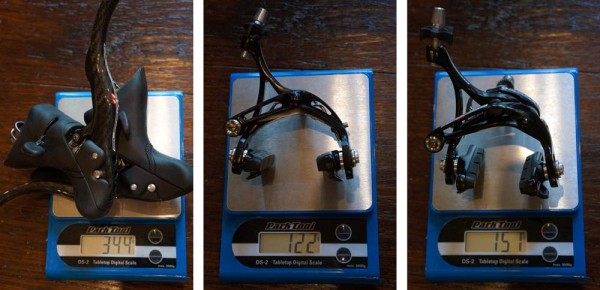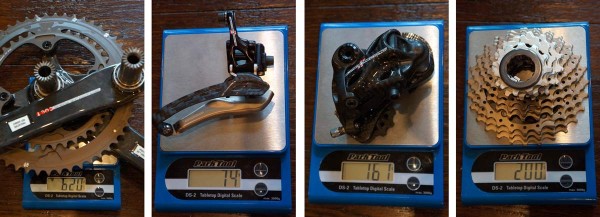The new Super Record, Record and Chorus mechanical groups were unveiled in late May, followed shortly thereafter by a new Chorus EPS group. The basic details were provided, but pricing, weights and the finer points were missing, so we used our time at PressCamp to fill in the holes.
When Campy unveils a new technology, it’s generally spread around its products fairly quickly. Sometimes it shifts altogether. Case in point: With it’s introduction, Chorus EPS is now the only mid-level electronic group – Athena EPS is no more, but it did get a functional update for the mechanical group.
Chorus keeps the different wire plug design that Athena had, which means it’s not compatible with Record/Super Record EPS. The reason they initially had a different wiring structure was to save costs over the more intricate plug design on the higher end groups. It’s still IP67 waterproof and just as secure as what’s used on SR/R, just a different design that’s simpler and cheaper from a new supplier. There’s no word on whether they’ll adopt that design on Record/SR down the road, but it certainly makes sense that they’d incorporate it on the next iteration.
For now, there are no announced plans to give OverTorque (BB30) cranksets the new asymmetric spider design, but it seems a natural progression.
All pivots on rear derailleur are now alloy rather than steel. The key difference between their various EPS groups (other than wiring plugs) are simply materials. The performance should be darn near identical.
The big news with the introduction of the new mechanical groups was improved front shifting. Most of the news focused on tweaks to the chainrings, but the mechanical front derailleurs were a big part of that. Since Chorus EPS was being launched virtually simultaneously, it took advantage of some of those changes, too. There are now just two pivots, each oversized for stiffness.
The cage is more heavily shaped than before to be stiffer, guide the chain better and reduced rubbing when cross-chained.
The other big change is that the brakes get their dual-pivot design for improved power. Like the other parts, it’s basically just material changes compared to its higher end siblings.
(photo intentionally blown out to show detail – lighting wasn’t ideal)
Chorus EPS component weights are:
- Crankset – 707g (including joining bolt inside spindle)
- Shifter levers – 295g
- Brake calipers – 151g and 159g
- Rear Der. – 226g
- Front Der. – 157g
- Cassette – 267g (new 11-27)
- Wiring Junction – 27g
- Battery – 139g
Retail for the complete Chorus EPS group is $3,500. By comparison, Record is $4,500 and SR is $5,300.
SUPER RECORD MECHANICAL GROUP TECH OVERVIEW
The biggest visual changes on the new mechanical groups are the cranksets’ asymmetrical design and the rear derailleurs. For the cranks, it’s to improve stiffness. For the derailleurs, there are a lot of functional updates to improve shifting performance and increase compatibility with wider range cassettes.
They get an additional spring at the top of the parallelograms (there are now four springs hidden throughout the part!) and increased overall spring tension. This was done to improve pull back, which means crisper shifting down the cassette, particularly on bikes with tight bends in the cable routing and/or full length housing that can add considerable drag to the system.
The new parallelogram design and bottom pivot relocation lets the pulleys move in a non-linear path, keeping the chain closer to the cogs on cassettes with wider ranges.
The change in angle of the parallelograms is a bit more evident from the rear. According to Campy’s North American tech rep, the new/additional spring is hidden inside the B-knuckle and adds to overall tension in the system to keep things firmly in place.
Tidbit: When they went to 10-speed derailleurs in 1998, they changed from using a B-screw to adjust top pulley position in relation to the cog to using a lower spring tension adjustment at the top of the cage.
Up front, the shifters use a new cam ratio for the derailleurs to work with the new designs. One of the big questions we couldn’t wrap our heads around was how you’d use a taller lever on the front derailleur and have less shifter lever movement. The revised cam ratios pull far more cable per shift, so you get more leverage over the front derailleur with a shorter lever throw. Magic, by way of physics, but it apparently works: Campy’s EPS pushes 52Nm of force to shift from small to large chainring. The original 11-speed mechanical groups could get up to 35Nm. The new design gets up to 44Nm of force, which is why they say it’s so much crisper and more powerful.
Another interesting bit for the Campy uninitiated: Their CULT bearings can basically be run dry with no degradation in performance. The bearings come stock on the crank spindle, which then press directly into the BB shell. The shell covers the backside of the bearings, which is why you’re seeing them without a seal here. They say it makes service much easier since you can just flush fresh grease in if you want.
2015 Super Record mechanical component weights:
- Shifters – 344g
- Brake calipers – 122g (single pivot) and 155g (dual pivot)
- Crankset – 620g (w/o connecting bolt)
- Front Der. – 74g
- Rear Der. – 161g
- Casssette – 200g (11-27)
The did not have bottom brackets on hand for weigh ins.
DISC BRAKES & OTHER QUESTIONS THEY DIDN’T WANT TO ANSWER
Disc brakes? Hydraulics? They have engineers working on it and they’re talking to brake pad and rotor manufacturers. Campy’s philoshopy, as you may imagine, is that they’re not just going to throw a caliper into the mix. They’ll build a complete group around a major new technology, which likely means not just brakes, but entirely new ErgoPower lever designs, new wheels, etc. Why aren’t they in a rush? Because the pro peloton isn’t asking for it.
When are they going to do a mountain bike group? 1991.
Why Fulcrum and Campagnolo wheels on the road side? Because people aren’t likely to run Campy wheels on a Shimano or SRAM equipped bike, so they wanted a brand that appealed to non Campy buyers.
